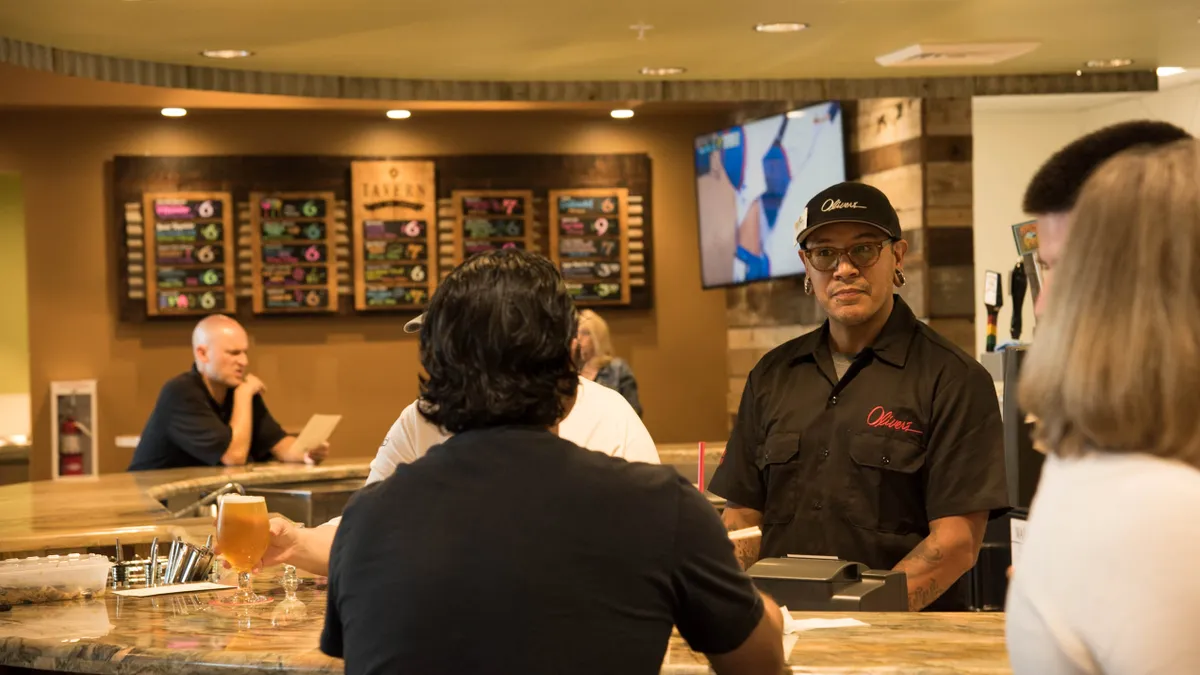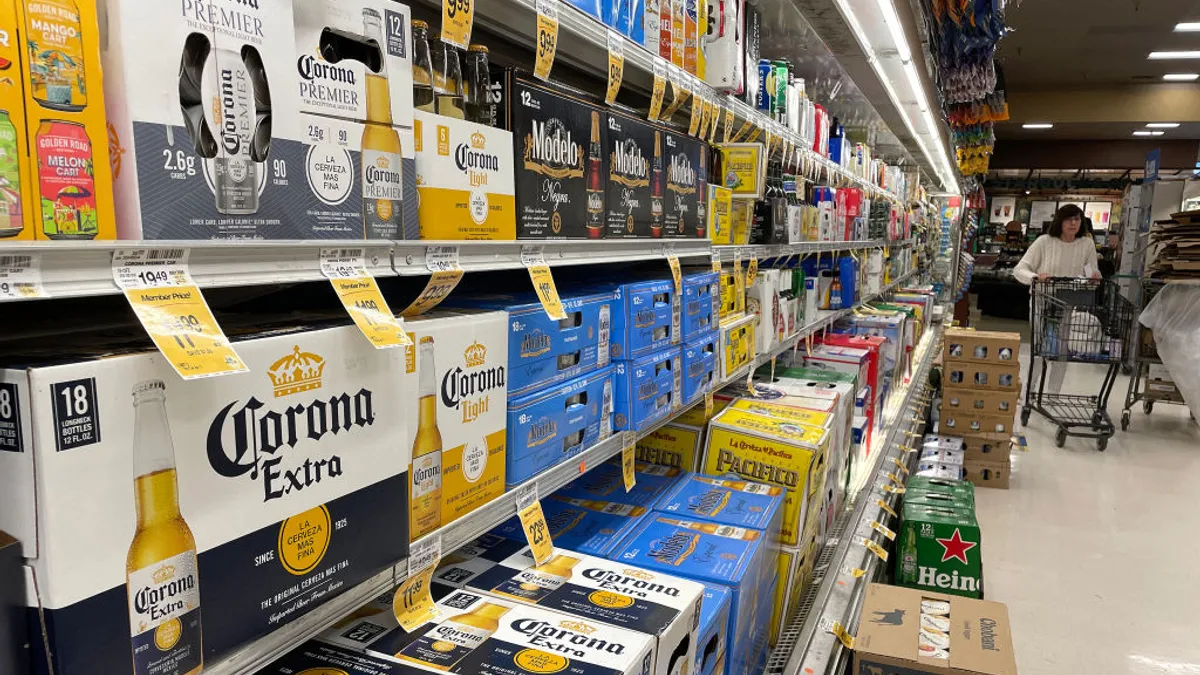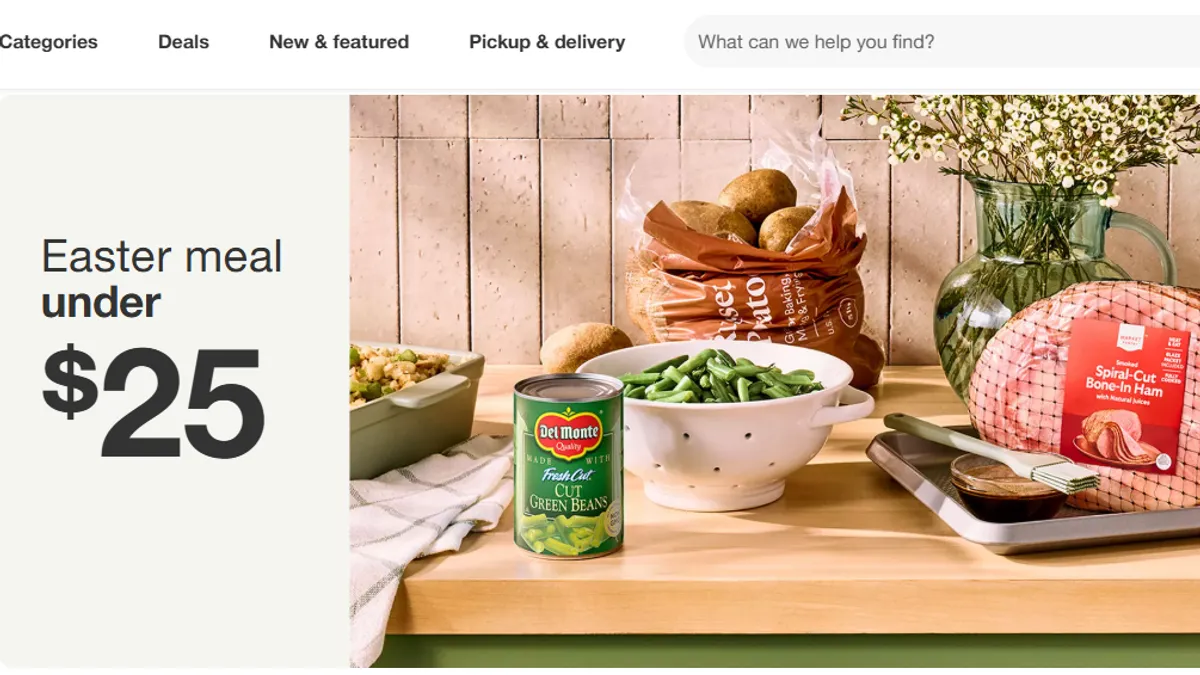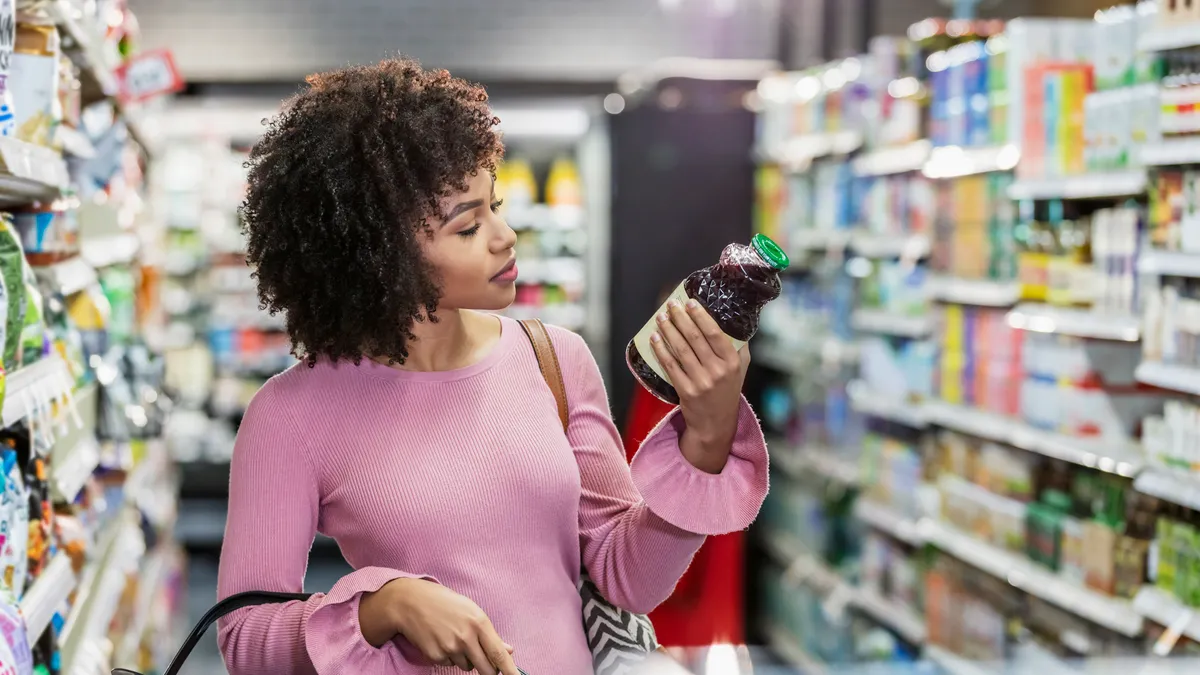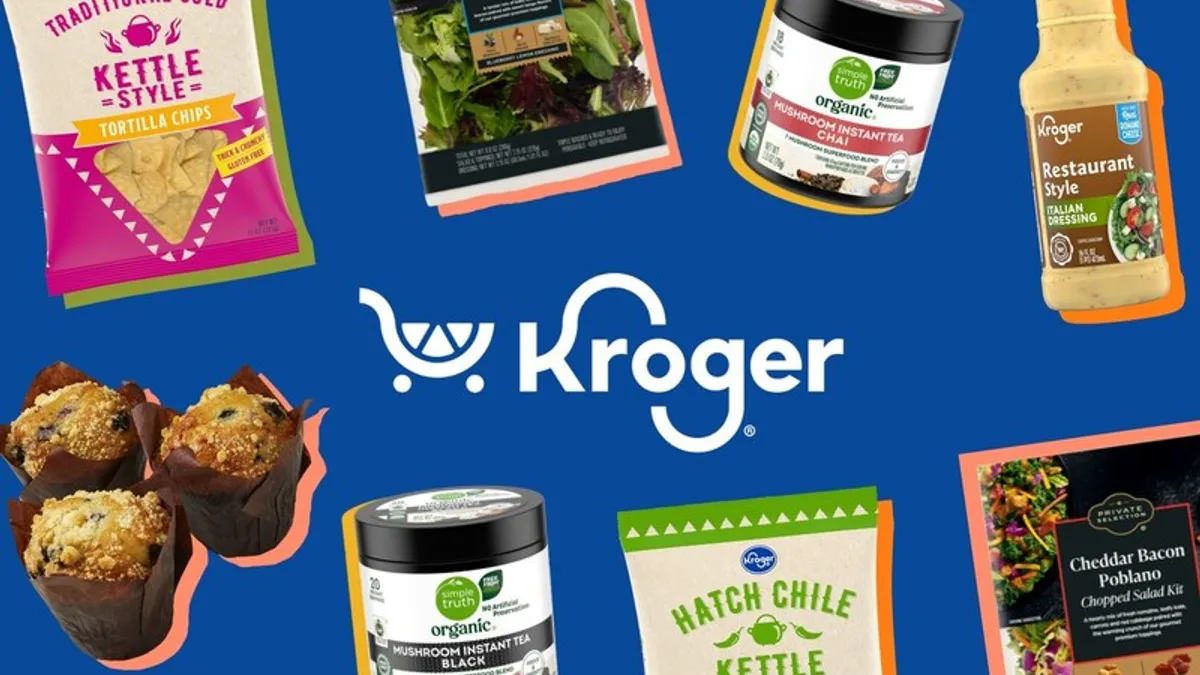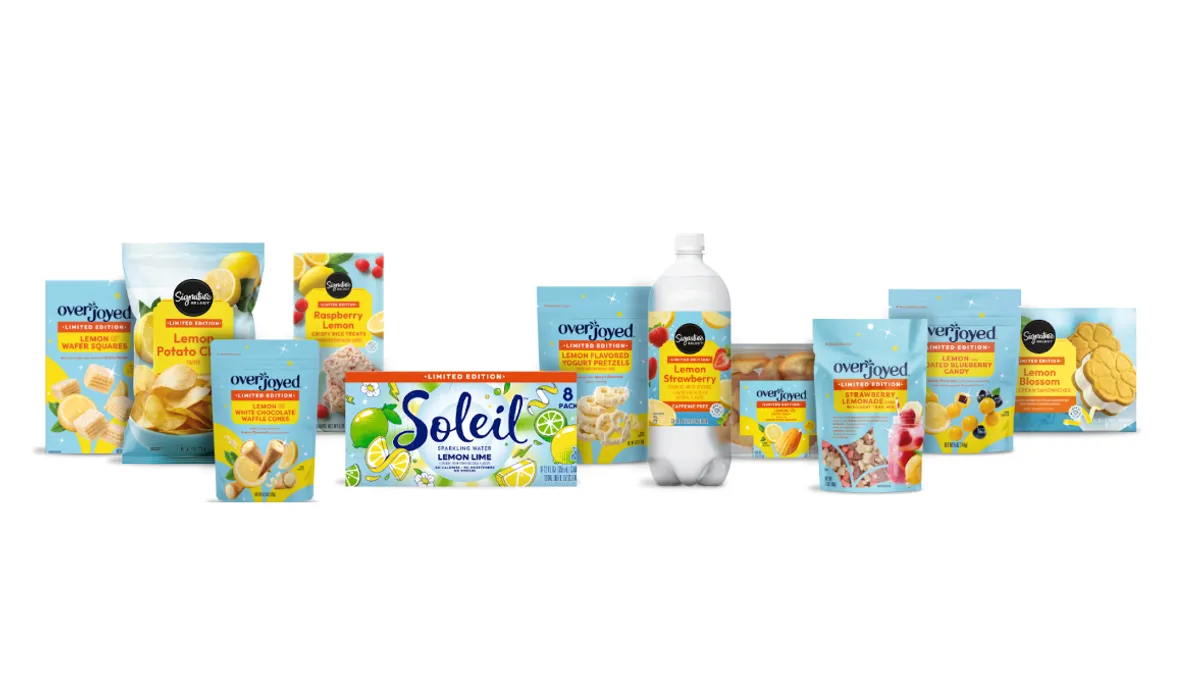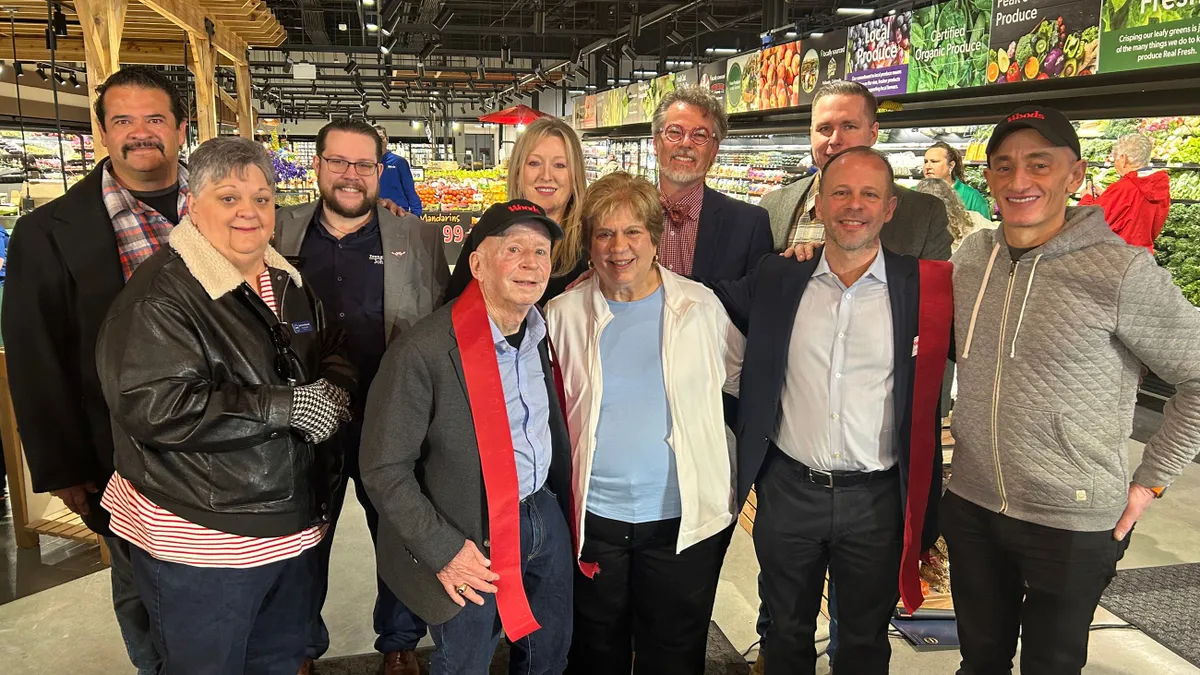When DeCicco & Sons decided eight years ago to become the first grocer in New York state to build a bar inside one of its stores, its customers welcomed the idea.
Since the ‘90s, the company had been building up its craft beer supply, and over time had developed a loyal following. It was one of the first supermarkets around to offer growler pours, and had become a go-to spot for beer from local breweries like Newburgh Brewing Company and SingleCut BeerSmiths.
Its supermarket competitors, on the other hand, weren’t so sunny on the move.
“They thought we were crazy,” Chris DeCicco, co-owner of DeCicco & Sons, told Food Dive.
Fast-forward to present day. DeCicco & Sons’ decision looks very, very sane. Inspired by multiple factors, including the popularity of craft beer, the desire to keep customers in stores longer, and increasing pressure to break out of the traditional supermarket mold, retailers across the country are raising a glass with in-store beer and wine bars.
The enticing prospect of growing store sales and creating an additional profit center, though, can overshadow the fact that in-store bars are only feasible for retailers under the right conditions, sources noted. There are also numerous challenges and potential pitfalls for companies used to stocking shelves, not slinging suds.
Cheers to beer
For many retailers, in-store bars are a natural outgrowth of the booming sales they’ve enjoyed with craft beer and wine. Craft beer has grown by double-digit percentages over the past several years, and now commands more than 22% of all beer sales. Wine represents a $39 billion industry that saw 4% sales growth in just the past year. The same customers who buy bottles from the wine and beer department, retailers reason, are likely to appreciate fresh pours and the opportunity to try new varieties.
Steve Thomas, chief marketing officer with in-store marketing consultancy Windsor Marketing Group, said bars can be profitable on their own for retailers. But their greatest value, he said, is in their ability to promote sales throughout the rest of the store.
“The bigger aspect of this is, the longer you keep someone in your store, the higher chance you have of them spending more money,” Thomas told Food Dive.
Last year, Oliver’s Market, an upscale retailer based in Sonoma County, California, opened a spacious tavern inside its store located in the town of Windsor. Called Tavern Off the Green, the concept features a rotating selection of beer and wine, along with a menu featuring dishes like Korean street tacos, hummus and vegetables, and Lagunitas-marinated pork chili. Customers can also bring in food from throughout the store and eat in the tavern.
Scott Gross, Oliver's general manager, said the company designed the tavern to be a community space that draws more than just beer and wine lovers.
"We have people who stop in as part of their shopping trip, but we also have customers who are coming specifically to the Tavern," Gross told Food Dive in an email. "We really see community building taking place with coffee and business meetings in the morning, lunch midday (with live music on Fridays midday and Saturday evenings), soccer team celebrations, stops for gelato, and then the beer lovers, sports, and after work crowds, too."
Like Oliver’s, Nob Hill Foods, which also operates in northern California, wanted to create a unique in-store experience that would entice customers to linger and keep them coming back. Two years ago, the operator, which is owned and operated by Raley’s, added bars inside two of its stores. One is located in the town of Capitola and the other is in Redwood Shores.
Anthony Dyer, associate category manager for beer with Raley’s, said the impetus for adding the branded bars — the one in Capitola is called Coastal Curve, while the one in Redwood Shores goes by Shore Cafe — was to keep up with Bay Area competitors that tend to be ahead of the curve with in-store offerings. Both bars focus on unique beers and wines, like barrel-aged stouts and limited-release reds and whites.
The strategy, said Dyer, has made the stores a go-to spot for craft beer and wine enthusiasts, who tend to spend more throughout the stores.
“Everyone can come in and get a Sierra Nevada, but you can’t always come in and find a limited release bourbon-barrel stout from Firestone Walker,” he told Food Dive. “We’re trying to do something that increases that availability that other chain grocers aren’t doing.”
DeCicco & Sons, which now has bars in five of its seven stores, will often host representatives from local breweries. They will offer samples and chat with customers in a setting that’s more conducive to drinking than a sampling booth in the middle of an aisle. Stores will also offer food samples from the store’s specialty departments, including cheese and sliced meats.
“If they want good beer then they’re going to want good cheese, good meats and good produce,” said DeCicco.
No doubt, retailers covet the craft beer and wine loving set, who tend to buy more specialty items throughout the store. Retailers are also finding that bars serve as a differentiator that pairs well with the increasingly sophisticated foodservice options retailers are offering in their stores.
“These bars really satisfy the needs of younger consumers, and that’s just going to build their loyalty as they get older.”

Steve Thomas
Chief marketing officer, Windsor Marketing Group
For companies keen on standing out while also attracting younger, more upscale consumers, bars have become a standard feature in the new concept stores they’re building. Weis Markets’ new 65,000-square foot store in Enola, PA has a pub featuring a rotating lineup of tap beer, including selections from local breweries like Troegs and Sly Fox.
One of the pioneers of in-store bars, Whole Foods, has added bars to stores in competitive markets like Chicago and New York. The natural foods retailer hopes the combination of beer, wine and food will prove irresistible to shoppers, especially millennials. One of its concepts, called The Watering Hole, features daily food and drink specials, and even live music.
“These bars really satisfy the needs of younger consumers, and that’s just going to build their loyalty as they get older,” said Thomas.
Millennials aren’t the only demographic supermarket bars are drawing, though. Nob Hill, Oliver’s and DeCicco & Sons also draw a lot of families and older consumers. DeCicco said his store bars tend to attract a lot of older shoppers who enjoy draught beer and wine but are turned off by the bar scene.
“A lot of our crowd are people who don’t normally go to bars because they feel they’ve grown out of it,” he said. “But they feel comfortable with our setting because it’s in a supermarket.”
Keeping a-head
The prospect of opening an in-store bar excites many supermarket retailers. But according to sources, only a small percentage can really make the concept work.
“It’s starting to trickle down into mainstream a little bit, but I think overall this concept works well with consumers who frequent a little more of an upscale supermarket,” said Thomas.
Even those stores that can make a go of it quickly find that running a bar is no picnic. In addition to keeping the space clean, the menus up to date and the bar constantly staffed, retailers must implement specialized tasks like cleaning and rotating tap handles, properly storing wine bottles, and educating bar staff on the differences between a syrah and a syrah blend, and between an IPA and a pale ale.
As Dyer tells it, retailers also find that trying to keep the bar selection unique and interesting in what’s become a very competitive industry can be a challenge.
“You can’t have the same five beer handles on tap all the time,” he said. “People won’t keep coming back. Keeping the excitement high is a challenge because you always have to be upping the ante.”
As the alcohol flows, retailers often find they have to play the role of enforcer, too. DeCicco said patrons at his bars are typically respectful, but to keep things under control he and his staff don’t let customers venture outside of the bar area with a drink.
“Legally, you can drink anywhere in the store,” he said. “But we just want to keep any eye on things, and don’t want customers handing off drinks to underage people.”
Many retailers are finding they don’t need to invest in a full bar to connect with beer and wine lovers. Jungle Jim’s International Market, which stocks hundreds of domestic and imported beers in its two southern Ohio stores, offers a tasting bar where customers can sample beer and wine before they buy, fill up a growler, or just chat with a knowledgeable staff member.
“We wanted to offer a more relaxed environment for our customers where grocery shopping becomes less of a chore and more of an experience”

Kristen Tetrick
Director of marketing and community engagement, Lucky’s
Lucky’s Market, a natural and organic retailer that has stores in 11 states, encourages consumers to grab a draught beer and drink it while they shop. To accommodate those who want to “Sip and Stroll," as the program is called, Lucky’s attached cup holders to its shopping carts.
“We wanted to offer a more relaxed environment for our customers where grocery shopping becomes less of a chore and more of an experience,” Kristen Tetrick, Lucky’s director of marketing and community engagement, told Food Dive in an email. “We found that this idea was very well-received and that people were relieved to slow down and spend some time browsing instead of just checking items off their list.”
Getting customers to slow down and enjoy themselves has been a key to the success of Nob Hill Foods’ Coastal Curl and Shore Cafe bars, said Dyer. But he’s hoping to make the spots even more productive by further tying them in with the rest of the stores. This might include offering foodservice delivered from the stores’ culinary stations directly to bar patrons, or holding tastings that bring together products from other departments that pair well with beer and wine. He’s also hoping to offer more beer and wine education to his bar staff, including Cicerone Certification, which offers an intensive course in beer serving, classification and the properties of different hops, among other things.
Ultimately, Dyer hopes Raley’s can eventually scale up to include bars in stores throughout the chain.
“We’re starting to think about how we can bring these bars up another level and hopefully make this a true proof of concept that we can make successful,” said Dyer.



